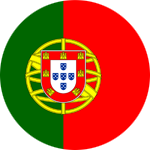The principal component of our life on board
Someone: „Hey Finn, wake up! It´s 01:30 a.m. You´re duty begins in 25 minutes.“
Me: „Ohhh, good morning… thank you for waking me up. How is the weather outside at the moment?“
Someone: „It’s a bit warmer than yesterday, like 17°…“
This is how I am woken up every morning for my duty aboard the ‘Thor Heyerdahl’.
Every student here belongs to one of the four duty groups with seven to eight other students, a watch leader, a copi (2nd watch leader) and a teacher, who are helping us with the tasks and are responsible for our safety. I am in the second watch group, which means that I am on sentry duty from two to five o’ clock in the morning and from two to five o’ clock in the afternoon, so a total of six hours a day. Half an hour before the watch begins, one person from the previous watch goes around the ship and wakes up everybody from the watch for their duty. In the beginning, it was very hard to know that my day starts at 01:30 a.m. But with time it became easier for me to get up this early in the morning.
After everyone has arrived on deck, the change of watches takes place: The outgoing watch tells the incoming watch about special things that have happened during their watch, for example that during a ‘Maschinenronde’ (engine control round) they have noticed that the cooling water for the cylinders is too hot. A ‘Maschinenronde’ is a safety routine in the engine room for which you use a long checklist to walk around the engine and check for unusual values and temperatures. We also have to walk another rounde: the ‘Sicherheitsronde’ (safety control round), which does not take place in the engine room but on deck and under deck in the space where we live. When we are on this control round, we have to check for example if there is fire or water anywhere. For the water, we use the bilges, which are holes in the floor you can look into to control whether it is dry. In addition to this, we have to monitor the weather and the ship’s position. If the electronical navigation equipment failed, we could go on with traditional navigation method, but for this we need to know our position, which we therefore draw into a sea chart every full hour.
These are all the jobs under deck, but most of the time of our watch we are on deck. Then we take over different tasks, like the helmsman, the person behind the steering wheel who is steering the ship according to the compass course decided by the chief mate. When you are the bow watch, you have to look out for buoys, other ships or dangers surrounding the ship, which you then report to the watch leader. These tasks are very important for the safety on board and must be taken very seriously. This is the reason why we change positions every 30 minutes so that everyone can stay concentrated all the time. Sometimes there are also special manoeuvres, like setting and taking down sails.
In my watch, I love to do the bow watch at night. Then, the whole ship is quiet and only we are awake, and you can see all the lights from the other ships, buoys and the stars. You can look up to the stars and if you are lucky, you can see shooting stars. During very cold nights I also like the engine control round because in the engine room the temperature is sometimes more than 25°C and this really is a luxury. My favourite watch so far was the first watch I wore short trousers and a t-shirt at 2 a.m. in the morning and it was not cold. Later during that watch, the stars came up and I even saw a shooting star.

